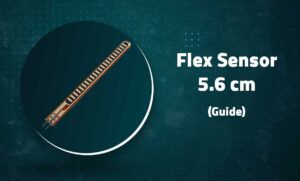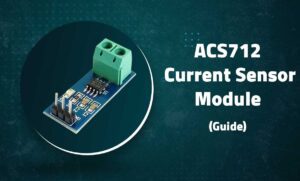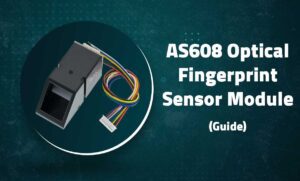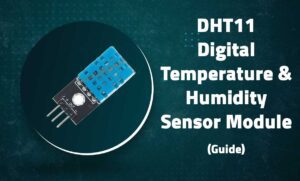Water Level Depth Detection Sensor
Water Level Depth Detection Sensor
Liquid Measurement for Arduino and IoT Projects
Introduction
The Water Level Depth Detection Sensor is a reliable tool for measuring liquid levels in tanks, wells, and other containers. Using exposed parallel traces, it measures water levels through conductivity with a simple analog output that varies with immersion depth.
 Key Features
Key Features
Depth Measurement
Measures water level up to 40cm (depending on model)
Simple Interface
Analog output proportional to water level
Low Power
Operates at 3.3V-5V with minimal current draw
Easy Installation
Mounts vertically with standard bolts
Technical Specifications
| Operating Voltage | 3.3V – 5V DC |
|---|---|
| Output Signal | Analog (0-VCC) |
| Measurement Range | Up to 40cm (model dependent) |
| Current Consumption | <20mA |
| Operating Temperature | 10°C – 30°C (for optimal performance) |
| PCB Material | FR4 with gold-plated contacts |
| Dimensions | 60mm × 20mm × 5mm (typical) |
Pin Configuration

| Pin | Label | Description | Arduino Connection |
|---|---|---|---|
| 1 | VCC | Power (3.3V-5V) | 5V |
| 2 | GND | Ground | GND |
| 3 | OUT | Analog output | A0 |
Note: The sensor should be mounted vertically with sensing traces facing downward
Wiring with Arduino
// Basic Connections: // VCC → 5V // GND → GND // OUT → A0 (analog input) // For best results: // - Keep sensor vertical // - Avoid touching the sensing traces // - Calibrate with known water levels
Important: Do not expose the electronics (top portion) to water – only the sensing traces should be submerged
Basic Water Level Example
// Water Level Sensor Basic Example
const int sensorPin = A0;
void setup() {
Serial.begin(9600);
}
void loop() {
int sensorValue = analogRead(sensorPin);
// Convert analog reading to voltage
float voltage = sensorValue * (5.0 / 1023.0);
Serial.print("Sensor Value: ");
Serial.print(sensorValue);
Serial.print(" | Voltage: ");
Serial.print(voltage);
Serial.println("V");
delay(1000);
}
Advanced Features
Depth Calibration
// Convert readings to depth (cm)
float readDepth() {
int raw = analogRead(sensorPin);
// Calibration values (adjust based on your sensor)
float depth = map(raw, 0, 1023, 0, 40); // 40cm max depth
return constrain(depth, 0, 40);
}Low Water Alarm
// Check for low water level
bool checkLowLevel() {
int threshold = 200; // Adjust based on your setup
return analogRead(sensorPin) < threshold;
}
void loop() {
if (checkLowLevel()) {
digitalWrite(ALARM_PIN, HIGH);
}
}Moving Average
// Smooth readings with moving average
const int numReadings = 10;
int readings[numReadings];
int index = 0;
int smoothReading() {
readings[index] = analogRead(sensorPin);
index = (index + 1) % numReadings;
int total = 0;
for (int i = 0; i < numReadings; i++) {
total += readings[i];
}
return total / numReadings;
}Percentage Calculation
// Calculate tank percentage full
float getPercentage() {
int dryValue = 50; // Sensor value when dry
int wetValue = 800; // Sensor value when fully submerged
int raw = analogRead(sensorPin);
float percent = map(raw, dryValue, wetValue, 0, 100);
return constrain(percent, 0, 100);
}Troubleshooting
No Output Change
- Check water is contacting the sensing traces
- Verify wiring connections
- Ensure power supply is adequate
Inconsistent Readings
- Clean sensing traces (mineral buildup)
- Implement software smoothing
- Check for water turbulence
Corrosion Issues
- Consider gold-plated sensors for harsh environments
- Apply conformal coating (except sensing area)
- Use in clean water when possible
Related Posts
MG90S Mini Digital 180° Servo
MG90S Mini Digital 180° Servo
Metal Gear, 2.2kg·cm Torque for RC and Robotics
Introduction
The MG90S is a compact di...
XKC-Y25-V Non-Contact Water Liquid Level Sensor
XKC-Y25-V Non-Contact Water Liquid Level Sensor
Capacitive Detection Without Physical Contact
Introduction
The XKC-Y...
Waterproof Ultrasonic Obstacle Sensor, Sensor with Separate Probe
+
Waterproof Ultrasonic Obstacle Sensor
Distance Measurement with Separate Waterproof Probe
Introduction
The Wa...
VL53L0X Purple Laser Distance Sensor Module
VL53L0X Laser Distance Sensor Module
High-Speed, High-Precision Time-of-Flight Distance Measurement
Introduction
The...
TCS34725 RGB Color Sensor Module
TCS34725 RGB Color Sensor Module
High-Accuracy Digital Color Detection with IR Filter
Introduction
The TCS34725 is a...
TCS3200 Color Sensor Module
TCS3200 Color Sensor Module
Precise RGB Color Detection for Arduino and Embedded Projects
Introduction
The TCS3200 C...
PN532 NFC RFID Read/Write Module V3 Kit
PN532 NFC RFID Read/Write Module V3 Kit
Advanced Near Field Communication for Arduino and Embedded Systems
Introducti...
HC-SR501 PIR Motion Sensor Module
HC-SR501 PIR Motion Sensor Module
Passive Infrared Detection for Security and Automation Projects
Introduction
The H...
Flex Sensor 5.6 cm (Detect Bending Motion)
Flex Sensor 5.6cm
Bend Detection Sensor for Arduino and Wearable Electronics Projects
Introduction
The 5.6cm...
ACS712 Current Sensor Module
ACS712 5A Current Sensor Module
Hall-Effect Based AC/DC Current Measurement for Arduino Projects
Introduction
The AC...
AS608 Optical Fingerprint Sensor Module
AS608 Optical Fingerprint Sensor Module
High-Precision Biometric Recognition for Arduino and Microcontroller Projects
...
DHT11 Temperature and Humidity Sensor Module
DHT11 Temperature & Humidity Sensor
Basic Environmental Sensing with Status LED for Arduino Projects
Introduction...







Recent Comments